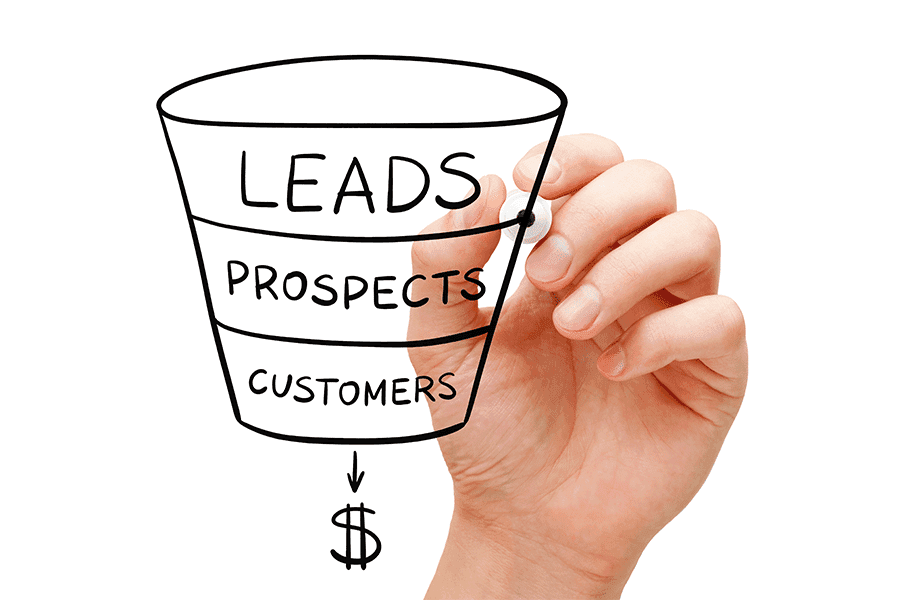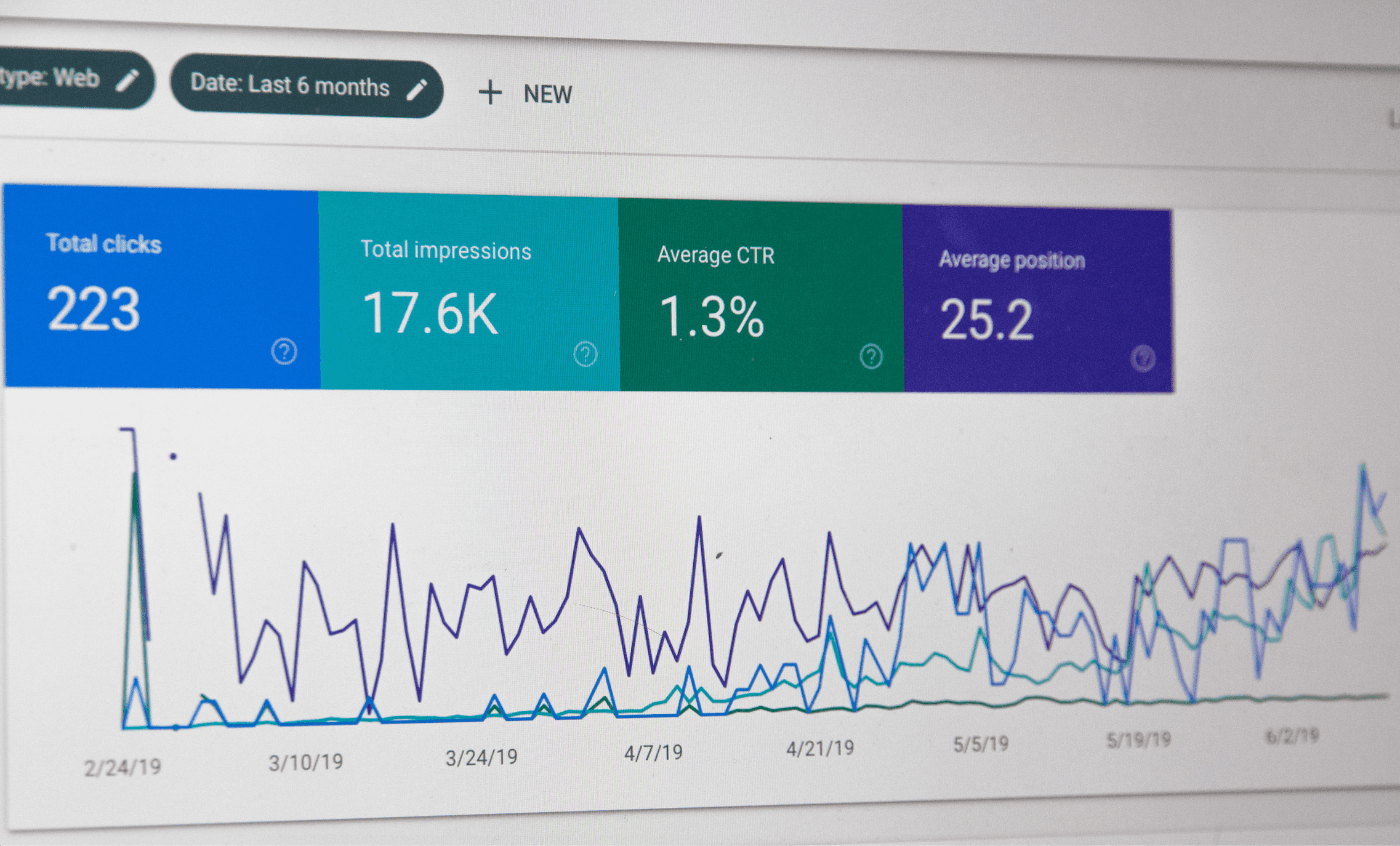3 Common Facebook Ad Mistakes + How to Avoid Them
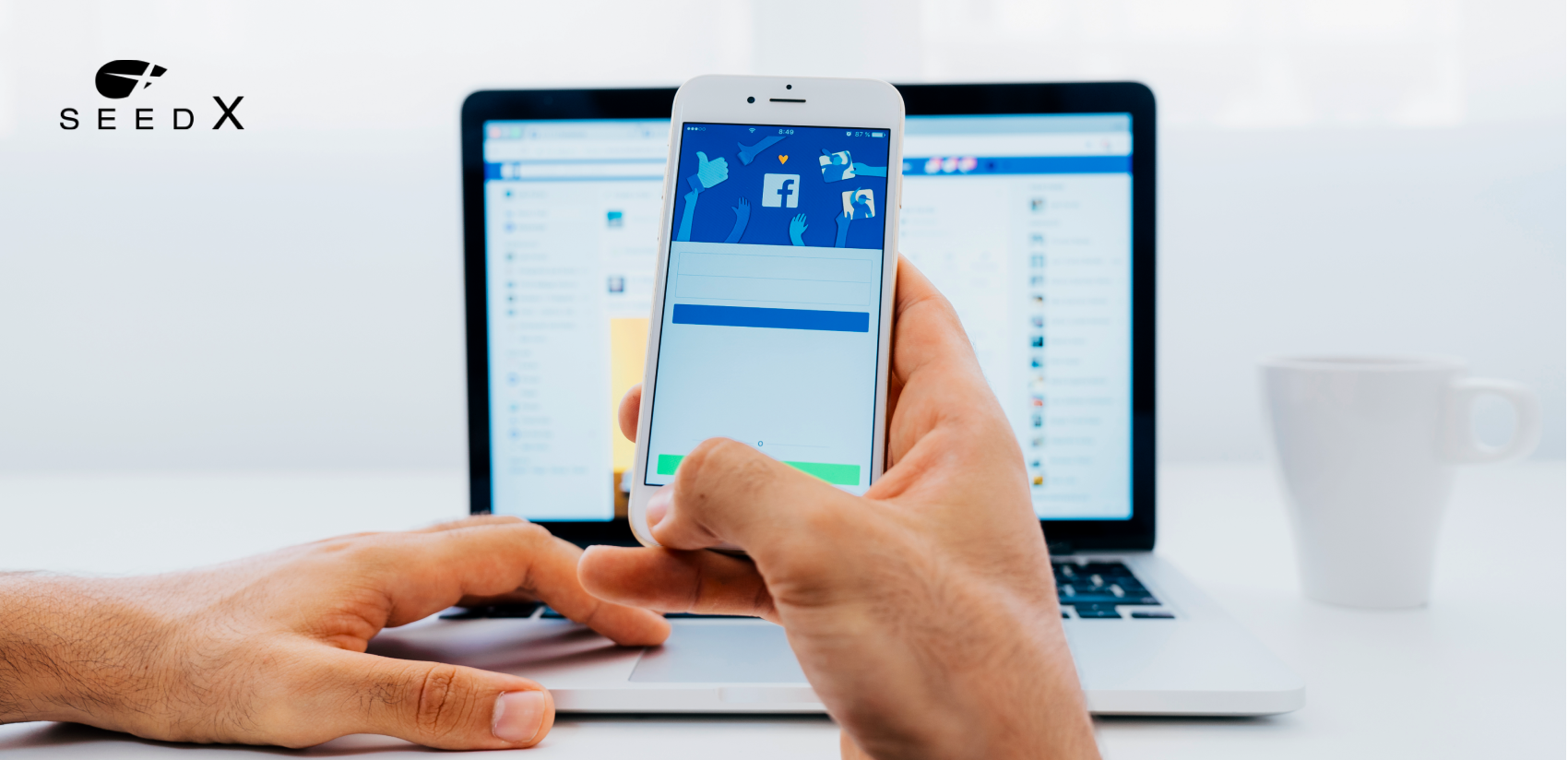
Facebook is a giant among social media apps. Let us paint the picture for more context:
- Facebook has more than 2 billion users, and on average, a user spends more than 40 minutes per day on the platform.
- People spend a collective 152,160 years on Facebook per day. That is 80 billion minutes a day that the human population spends on one platform. 80 billion minutes is equivalent to 152,160 years per day.
If you are a business owner, a social media influencer, a non-profit, or an individual just trying to spread a message, then Facebook is an essential tool to master.
However, for the marketers that use the platform, many make careless and avoidable mistakes that cost them in the long run. Let’s take a deeper look.
1. Facebook Ads Targeting
Bad audience targeting — this is the first mistake.
Did you know that over 50% of people target the wrong audience? This happens because most people are not specific when setting up their audience, resulting in unqualified leads that do not convert into paying customers, subscribers, etc.
So, how do you choose your target audience?
How to Set Up Your Facebook Audience
After setting up your Facebook Ad account and campaign, you will be led to an Ad Set. An Ad Set is where you define the audience.
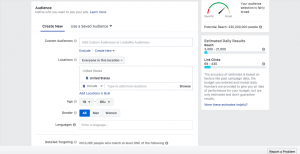
First, set your audience location and then set up Custom Audiences.
In Custom Audiences, you have the ability to import certain criteria like emails, phone numbers, or other audiences to help you make an audience or one similar to an audience you already have if you are trying to extend your reach.
For the next step, we’ll use an example for better demonstration. Let’s say we have a local coffee shop based in Dallas specializing in traditional Italian coffee.
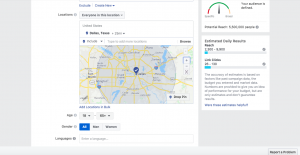
The map defaults to 25 miles automatically during campaign setup.
The first thing that we will do is set the location to Dallas. It will automatically adjust the radius to 25 miles. Depending on your business, adjust the distance.
In our case, we want to target a smaller radius. Therefore, I will adjust the radius to 10 miles. Something you should consider here is: don’t go too narrow with the target distance. Even though going more narrow to increase local reach works, be mindful of the people who live outside your target radius who commute to work and might be ideal customers.
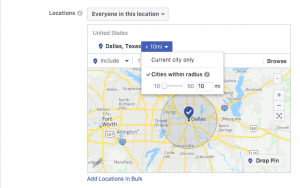
Reduce the radius, but be careful not to make it too small.
After setting the desired location, the next step is defining the age and gender of our audience. For our example, I set the age as 16-30 because our coffee shop is trendy and young, and this would be an ideal range for people who want a cool coffee shop to hang out in.
I also left the gender to all because we serve everyone.

Customize age and gender to your target demographic.
Now, when you launch your first campaign, you might be surprised by how people respond to your ad. It is not uncommon to think that your target audience is 25-30-year-olds, only to find 16-year-olds engaging and loving your ads.
When this happens, revise your strategy and optimize your ads. You should always optimize your ads for the best performance. Additionally, whatever insights you draw from running your ads, use them to build your customer profiles.
Finally, in this part, fill in the language section with the language of your target audience.
The next section is very important. Most people leave it blank, which negatively affects the performance of their Facebook ads.
Using our example, anyone in the age range of 16 – 30 in the Dallas area will see our ad. However, not all of those people will be a good fit for our coffee shop. Therefore, we need to narrow down our audience a little bit.
Here’s a small list of things that someone who might like Italian Coffee might also like:
- Italy
- Coffee
- Starbucks
This will help us reach a more targeted audience within the 16 – 30 age range.
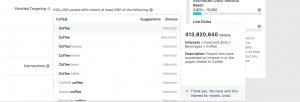
When I insert coffee, I will get information about the number of people who are interested in coffee. When I add Starbucks and Italy, I get a subset of people who like coffee but also like Starbucks and Italy.
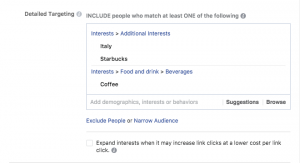
Be creative with how you choose your audience.
After adding in these demographics, you can see that our audience went from millions to thousands. This is perfect!
We can and should also add in more interests for better audience targeting. For example, Facebook also suggests people who like coffee houses and different types of Coffee beans. Based on the type of coffee beans we use, I can also add these categories.
However, we do not want to be too narrow that Facebook finds it difficult to deliver our ads to any people.
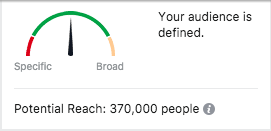
This is a good potential range for our initial Ad.
After we add in our interests, we want to exclude people who are not in our demographic. I want to exclude people who were interested in coffee tables and makers. These people don’t fit our prospective profile.
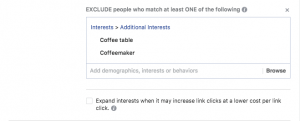
Exclude people who don’t fit your customer profile.
Now, this section is one of the key sections of Facebook ads. There are tons of other features, but if you deliver your ad to the wrong people, then all of the rest will be useless.
You should be meticulous during this phase. If you want to learn more about how to set up Facebook ad campaigns, here is a great guide.
2. Writing Facebook ads: Make Your Headlines Memorable
Ditch the boring headlines — this is the second mistake.
A headline can make or break your ad. A recent study showed that only 2 of 10 people read beyond the headline. This means 80 percent of people don’t go beyond the headline because it doesn’t persuade them enough to do so. Therefore, your ad headline should be as compelling as possible in order to get more people to read beyond it.
Enter copywriting.
Here are a few tips you can use to elevate your ads even if you are not a master copywriter.
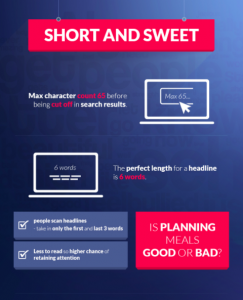
a. Use ‘emotional’ words
A good headline has to have words that touch the readers’ hearts. It needs to connect with the mind, but most importantly, the heart. It has been proven that people respond better to words that provoke emotion like “never before,” “mistakes,” “miss out on,” “take advantage of,” and “risk-free.” etc.
b. Negative words
Negative words can help drive a higher click-through rate and get more people to read your ad beyond the headline. They include “no,” “without,” and “stop”.
c. Numbers
Do not use rounded numbers like 90 or 100. The more obscure the number, the more believable. Experts also recommend using odd numbers like 11, 21, and 37, as they are more compelling.
Additionally, the bigger the number, the better it will perform. “156,342 people clicked this link today” makes you want to click the link even more.
d. Personalization
People love being recognized. Therefore, personalize your headlines and speak to an individual rather than a group of people. Use words like “you” to make the words more personal.
For example, “This New Hack Will Amaze You” and “This New Hack is Amazing.” The first example is more compelling because it is personalized and speaks directly to the reader, compared to the second example, which doesn’t address the reader.
Bonus tip: Like anything, the more attention to detail you put into the post, the more likely you will see higher click-through rates and conversions.
3. Creating Facebook Ad Images
Poor image quality — this is the third mistake.
Pixelated and poorly cropped pictures are the death of every ad campaign. Poor image quality triggers negative subconscious feelings about the ad, making people scroll away.
On the other hand, good-quality images are associated with positive emotions, which may cause more people to click on your ad.
What is a good picture? Well, let’s take a look at a few examples.
- Well-lit and bright-colored photos
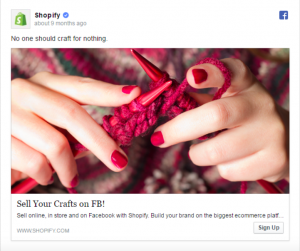
In this ad, Shopify wants to influence people with hobbies like knitting to sell on their platform.
Shopify does a great job of showing a simple but bright picture that immediately grabs your attention. The first thing we see is the dark red nails, red knitting needles, and red yarn.
This is contrasted with a blurry person in the background who is also wearing a knitted sweater. This picture does an amazing job of grabbing your attention and incorporating elements of their business.
Additionally, look at the body copy, which starts with a negative keyword. Shopify did a great job speaking to their target customer through the image and text.
- Humorous images
Now, let’s take a different example that uses humor.
Slack is a messaging application that is mainly used for businesses. However, with their bright color and unique sense of humor, they find a way to stand out in an otherwise boring field.
This picture is hilarious because we normally do not see people riding pink horses on their way to meetings. It grabs your attention. Notice how they also use the odd number “25” to make the ad more compelling.
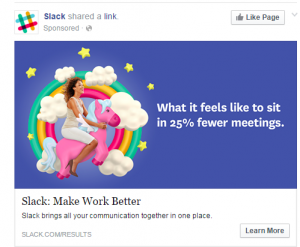
Flex that humor bone. Do not be afraid to flex your funny bone and give your brand a sense of humor. Perhaps this is what will help you stand out in your industry.
- Use of contrasting colors
This next example does a great job of contrasting. Contrasting is one of my favorite techniques to grab people’s attention.
NatureBox image has a nice white and grey background. The food looks great, but they grab your attention with the red “free trial” message that stands out against the background.
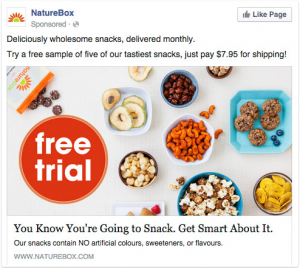
This is a great example of how you can get the attention of someone who is scrolling through Facebook using bright, contrasting colors.
Often, this will make someone stop scrolling and see what you have to say. Orange is also another great color you can use to grab people’s attention.
Conclusion
Facebook ads can be a game changer for businesses of all sizes. However, we see many people wasting their advertising budgets with these mistakes. Hopefully, this article will help you improve your ads and return on investment.
If you are looking for a Facebook advertising agency to help you optimize your ads and improve your revenue, we will be happy to help. Contact us today to discover how we can help you.
FAQ:
1. How much does it cost to advertise on Facebook?
Advertising on Facebook is relatively affordable and flexible, with costs depending on your budget and campaign objectives. On average, businesses may spend anywhere from $0.50 to $2.00 per click. Facebook offers a cost-effective platform with customizable budgets, where you can set a daily or lifetime budget, and the cost can vary based on targeting options, ad placements, and industry competition.
2. Advertising on Facebook vs Google: which is better?
Choosing between Facebook and Google for advertising depends on your business goals and target audience. Facebook is excellent for brand awareness and targeting specific demographics, interests, and behaviors. In contrast, Google Ads are ideal for reaching customers with high intent, such as those searching for specific products or services. Both platforms have their unique strengths, and often, a combined strategy can yield the best results.
3. How to see audience overlap in Facebook Ads?
To check audience overlap in Facebook Ads, use the Audience Overlap tool in the Audiences section of Ads Manager. This tool helps you compare different audiences to see how much they overlap, ensuring you’re not targeting the same group multiple times. This feature is vital for optimizing ad spend and improving campaign effectiveness.
4. How long do ads stay in review on Facebook?
Typically, Facebook reviews ads within 24 hours, but it can take longer sometimes. The review process ensures ads comply with Facebook’s advertising policies. Factors like ad content, image/text ratio, and target audience can affect the review time. If your ad hasn’t been reviewed within 48 hours, it’s advisable to contact Facebook support for assistance.
5. Are Facebook Ads worth it?
Facebook ads are worth it for most businesses due to their extensive reach and advanced targeting options. They provide a cost-effective way to increase brand awareness, generate leads, and drive sales. The platform’s robust analytics tools also help in tracking performance and ROI. However, success depends on understanding your audience, setting clear objectives, and continuously optimizing your campaigns based on data-driven insights.






